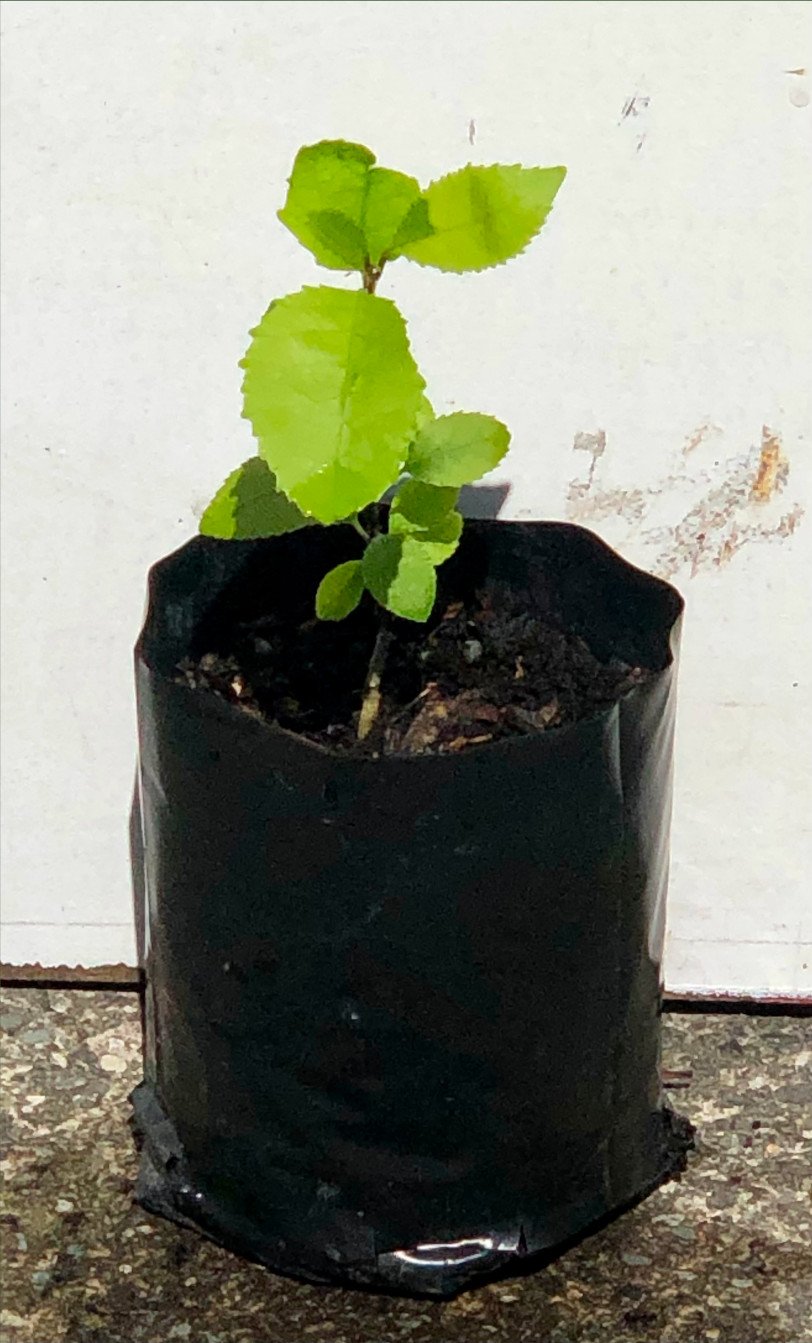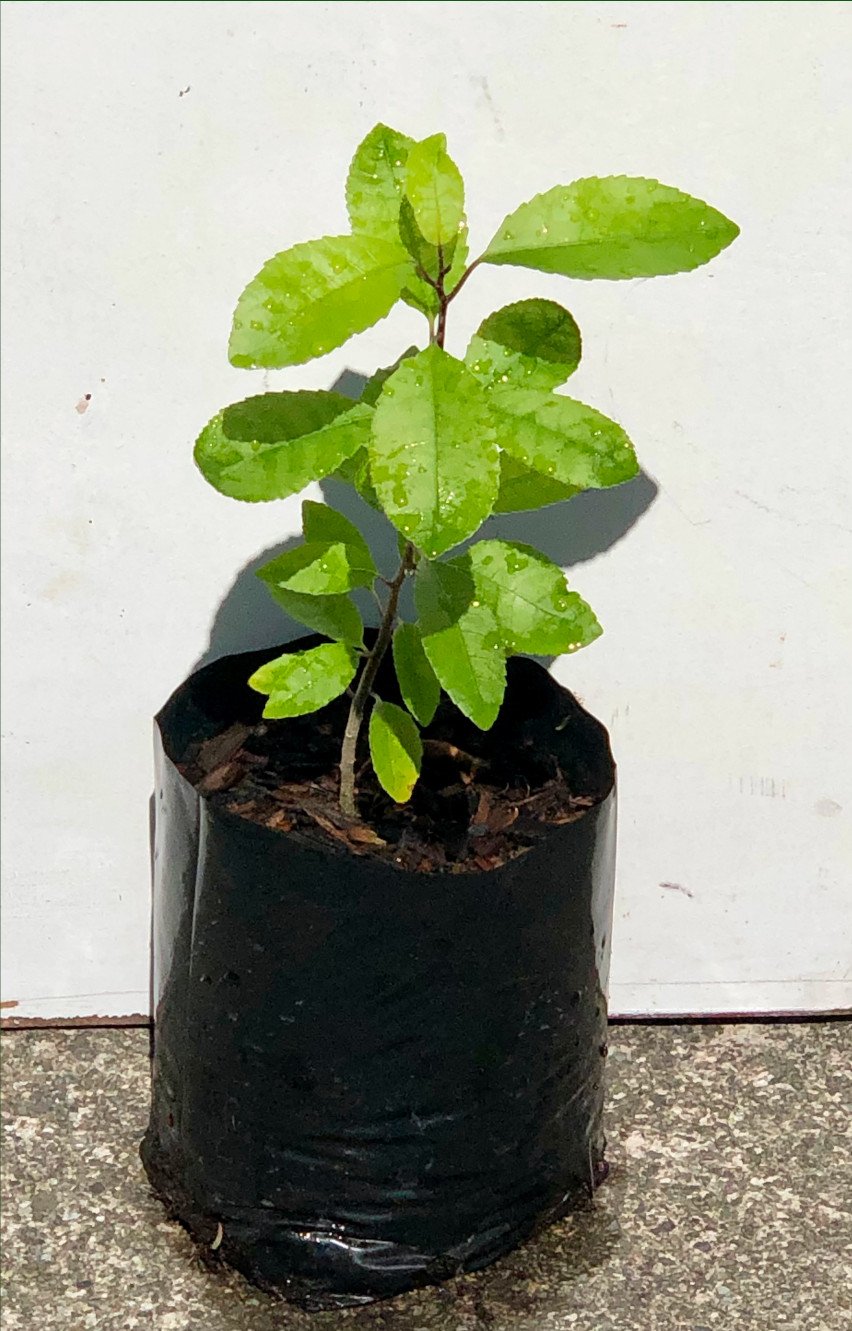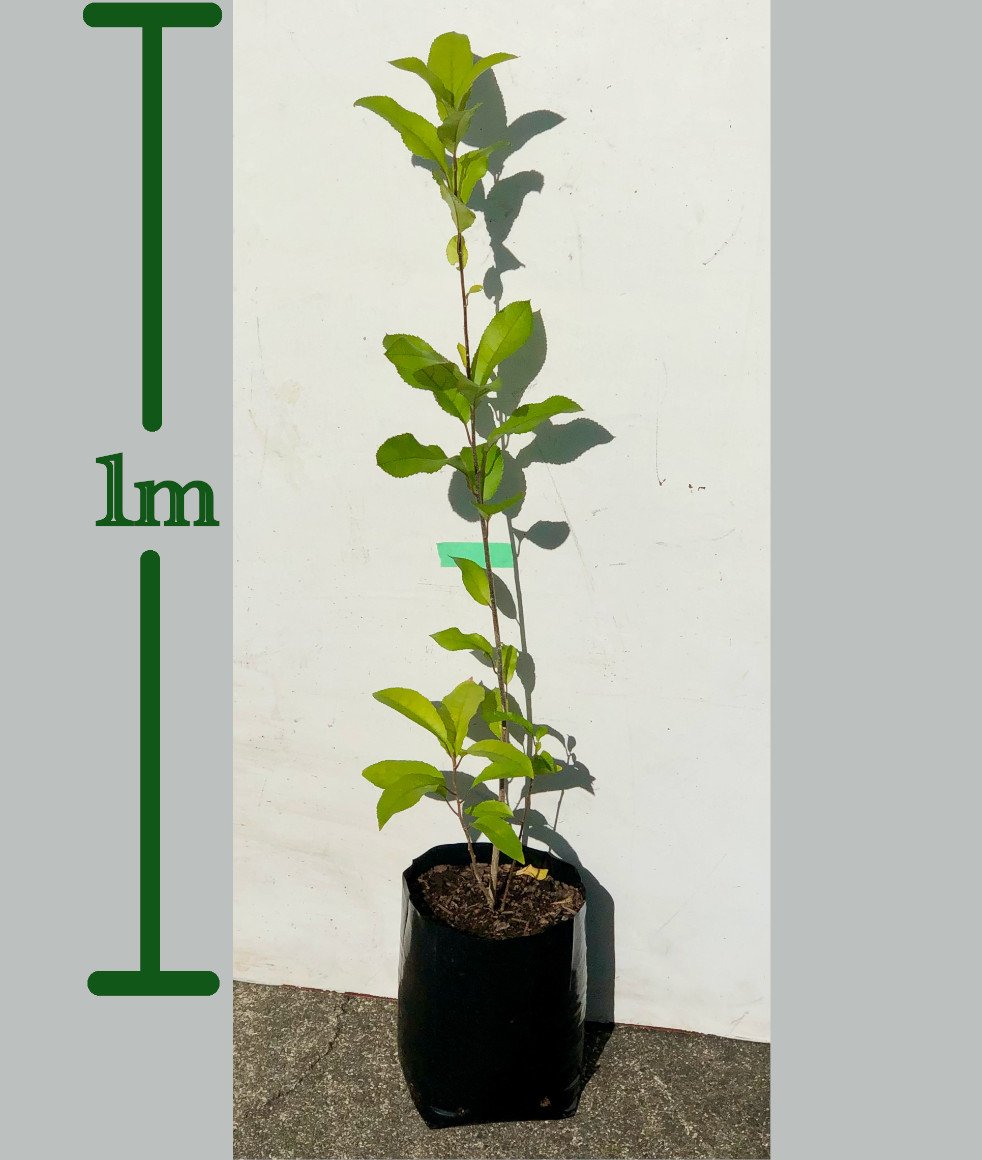 Image 1 of 6
Image 1 of 6

 Image 2 of 6
Image 2 of 6

 Image 3 of 6
Image 3 of 6

 Image 4 of 6
Image 4 of 6

 Image 5 of 6
Image 5 of 6

 Image 6 of 6
Image 6 of 6







Melicytus ramiflorus - Mahoe, Whiteywood
Mahoe is one of New Zealand’s most common trees, thriving in forests and scrub across the country. It grows quickly, reaching heights of 5 meters or more. The leaves are pointed and oval, with a bright green colour, while the fresh growth appears softer and an even brighter green. The tree’s bark is greyish-white and becomes beautifully mottled with lichens over time. In spring, it produces tiny flowers in abundance, which are followed by numerous purple-black berries. Mahoe is versatile, suitable for clipping into hedges, shelter planting, or as an attractive specimen tree.
Growing Conditions:
• Tolerances: Frost, Sun, Salt, Wind, Coastal, and Free-draining
• Endemic Distribution: Found throughout New Zealand, with subspecies also in Norfolk Island, Fiji, Samoa, and Raoul Island (Kermadec Islands), and possibly in Three Kings and eastern Northland
Specifications:
• Height: 10 meters
• Flowering: November – February with green or yellow flowers
• Fruiting: November – March with purple fruit
Ideal Uses:
• Bird food / Attractant
• Forests
• Pioneer plantings
Mahoe is a hardy and fast-growing tree that makes an excellent addition to any garden or restoration project, providing a natural habitat for birds and contributing to forests and pioneer plantings.
Approximate product size & price:
• PB3/4 (5cm – 20cm, 350ml): $8 each | 9 for $60
• PB3 (20cm – 70cm, 1.5L): $15 each | 5 for $60
• PB8 (50cm+, 3.5L): $32 each | 4 for $100
More than happy to mix and match bulk pricing with plants of the same price range.
Timeframe:
We ship Monday – Wednesday for South Island customers and Monday/Tuesday for Rural and North Island customers. Orders placed outside these days will be fulfilled the following week.
Local pick ups and/or deliveries will be made by arrangement.
Need a custom shipping quote? If the set pricing seems a bit steep, get in touch with us at Nelson Natives, and we’ll see what we can do.
“We’ll donate $1 per plant sold to national conservation efforts, helping to protect and restore New Zealand’s natural heritage”
Mahoe is one of New Zealand’s most common trees, thriving in forests and scrub across the country. It grows quickly, reaching heights of 5 meters or more. The leaves are pointed and oval, with a bright green colour, while the fresh growth appears softer and an even brighter green. The tree’s bark is greyish-white and becomes beautifully mottled with lichens over time. In spring, it produces tiny flowers in abundance, which are followed by numerous purple-black berries. Mahoe is versatile, suitable for clipping into hedges, shelter planting, or as an attractive specimen tree.
Growing Conditions:
• Tolerances: Frost, Sun, Salt, Wind, Coastal, and Free-draining
• Endemic Distribution: Found throughout New Zealand, with subspecies also in Norfolk Island, Fiji, Samoa, and Raoul Island (Kermadec Islands), and possibly in Three Kings and eastern Northland
Specifications:
• Height: 10 meters
• Flowering: November – February with green or yellow flowers
• Fruiting: November – March with purple fruit
Ideal Uses:
• Bird food / Attractant
• Forests
• Pioneer plantings
Mahoe is a hardy and fast-growing tree that makes an excellent addition to any garden or restoration project, providing a natural habitat for birds and contributing to forests and pioneer plantings.
Approximate product size & price:
• PB3/4 (5cm – 20cm, 350ml): $8 each | 9 for $60
• PB3 (20cm – 70cm, 1.5L): $15 each | 5 for $60
• PB8 (50cm+, 3.5L): $32 each | 4 for $100
More than happy to mix and match bulk pricing with plants of the same price range.
Timeframe:
We ship Monday – Wednesday for South Island customers and Monday/Tuesday for Rural and North Island customers. Orders placed outside these days will be fulfilled the following week.
Local pick ups and/or deliveries will be made by arrangement.
Need a custom shipping quote? If the set pricing seems a bit steep, get in touch with us at Nelson Natives, and we’ll see what we can do.
“We’ll donate $1 per plant sold to national conservation efforts, helping to protect and restore New Zealand’s natural heritage”